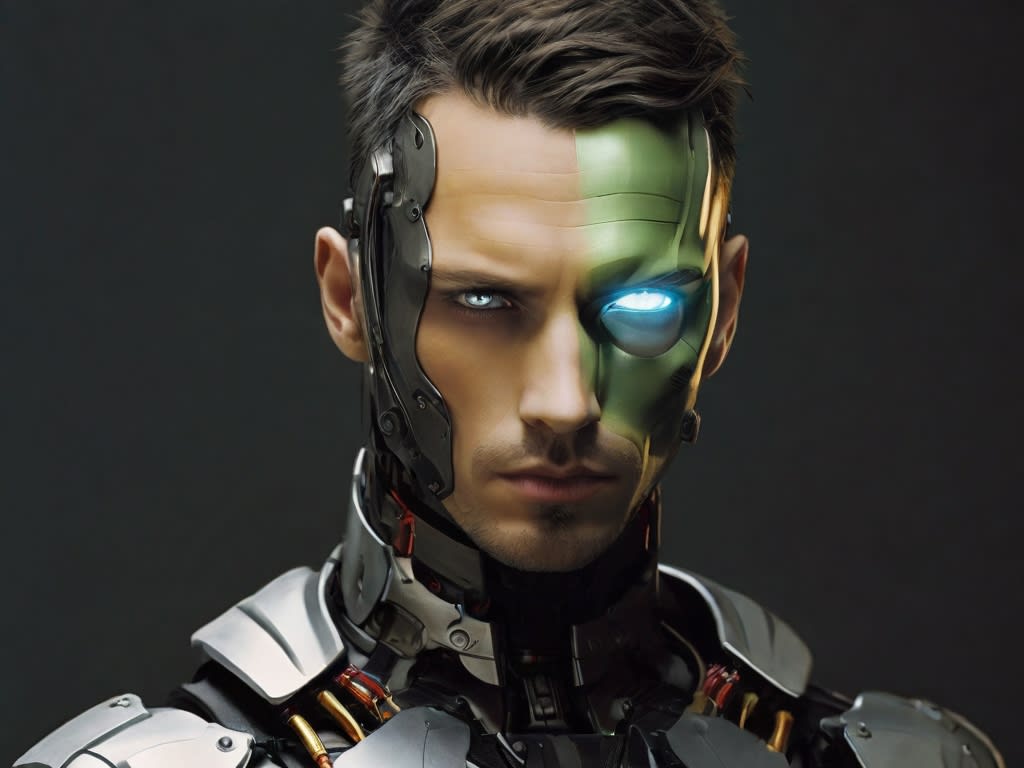The Rise of AI in Hollywood: Blessing or Curse?
Filmmaking Vs. Technology

Generative AI has exploded in Hollywood recently, enabling filmmakers to achieve startling realism and immersion. From de-aging actors to creating digital doubles, the technology holds great promise. Yet it also raises profound questions about consent, dignity, and the future of creativity.
The potential is staggering. Using neural networks, GANs, and other techniques, generative AI can conjure vivid landscapes, exotic creatures, and complex visual effects. It can even resurrect long-dead stars or create imaginary performers who never existed. The savings in cost and time are tremendous too, as complex scenes and dangerous stunts no longer require elaborate sets, props, or insurance.
Yet controversy erupted when the indie film Deepfake used AI to insert A-listers into explicit scenes without their consent. Lawsuits also flew over posthumous usage rights and intellectual property concerns. Finding Jack, for example, resisted the estate of James Dean over its use of a synthetic Dean in a leading role. The matrix expands: Who owns the rights to these AI avatars? And what if the technology, at some point, enables the casual generation of not just new landscapes but entire films?
These were simmering questions, but the transformation of Hollywood’s labor landscape brought a boiling point. Streamed content had already put economic pressure on actors and writers. Self-taped auditions became more common amid the pandemic, but created concerns over privacy and access. Then AI emerged as an existential threat, capable of scanning actors’ faces and motions to generate autonomous performances—a digital puppet show sans puppeteer.
When SAG-AFTRA negotiations with major studios stalled over these issues, actors took a stand. For the first time since 1980 they initiated a strike, coinciding with Hollywood writers for maximum impact. The key demands: greater streaming residuals as those platforms displace theaters, more regulation over intrusive auditions, and limitations on synthespians crafted to mimic real performers absent consent and compensation.
The studios claimed these demands were unworkable in a strained economic climate. And why restrict AI, they countered, when it could enhance quality, access, and innovation? Yet after months of impasse, during which celebrities and fans noisily supported the strike online and off, an agreement emerged. While falling short of outright bans, it did expand residuals, increase protections for audition tapes, and impose guardrails limiting the automated scanning of actors and generation of doppelgangers absent consent and compensation.
Yet some directors see AI less as a threat than a tool. Advocates like James Cameron and Jon Favreau praise the power to cheaply insert crowds, craft alien vistas, or simply stretch production budgets further than ever before possible. And isn’t there a creative opportunity as well? Spielberg himself has mused about AI’s capacity to generate new story concepts. Yet even he admits risks remain around authenticity and consent.
As the strike fades, tensions linger between the craft and the computational, the human and the hyperreal. Some like Keanu Reeves warn darkly of AI’s expanding empire; others like Scarlett Johansson invite the possibilities. Can rules preserve roles? Or will Silicon Valley and Hollywood increasingly intersect? The coming years may see a consolidation of the booming streaming landscape, along with adoption of new tech-fueled production models refined during the pandemic. Yet for now an uncertain future awaits—one where analog actors may drift toward the virtual, and increasingly find themselves competing with, and working alongside, their digital doppelgangers.
Artificial intelligence (AI) is expected to have a profound impact across many industries in the coming years. Some predictions include the potential development of artificial general intelligence (AGI) with capabilities rivaling or exceeding human intelligence. While promising, AGI poses ethical and social risks. AI for education could also become more widespread and effective, helping students learn in personalized, engaging ways. AI agents may assist users with various everyday tasks, learning from behavior to provide recommendations. Additionally, generative AI could produce highly realistic and creative content like images, videos, and text. However, as AI grows more advanced, issues like fairness, accountability, and human values become more pressing. Governing responsible AI development involves collaboration among stakeholders across sectors and geographies. Though the future remains uncertain, it is critical we remain cognizant of both the potential benefits and limitations of AI, using the technology judiciously.
About the Creator
Sherif M. Awad (Film Critic)
Born in Cairo-Egypt, Sherif M. Awad is a film professional who worked as a programmer and curator since 1990.
Websites: https://linktr.ee/sherifmawad
YouTube: https://linktr.ee/sherifmawad1
Enjoyed the story? Support the Creator.
Subscribe for free to receive all their stories in your feed. You could also pledge your support or give them a one-off tip, letting them know you appreciate their work.






Comments
Sherif M. Awad (Film Critic) is not accepting comments at the moment
Want to show your support? Send them a one-off tip.